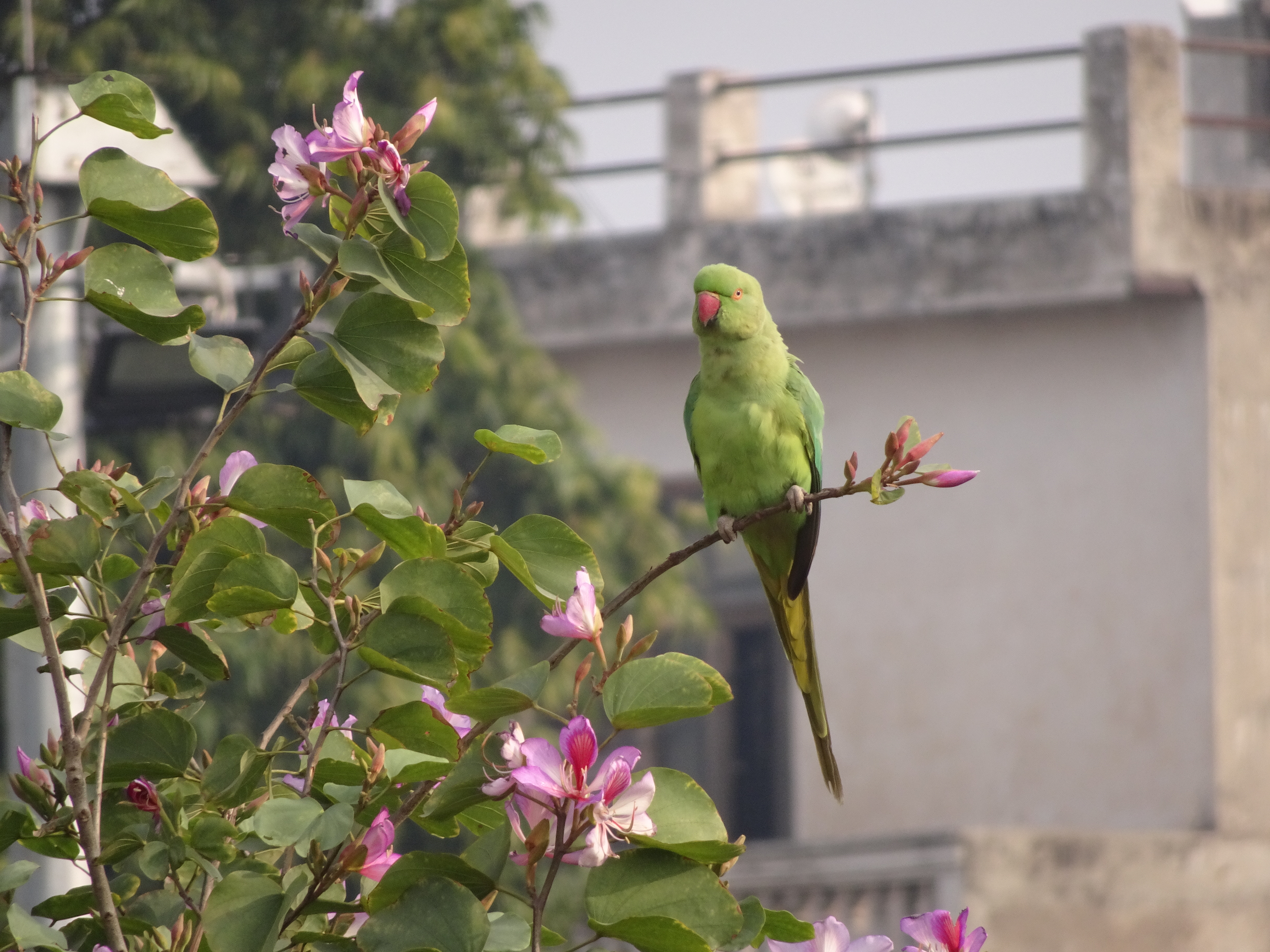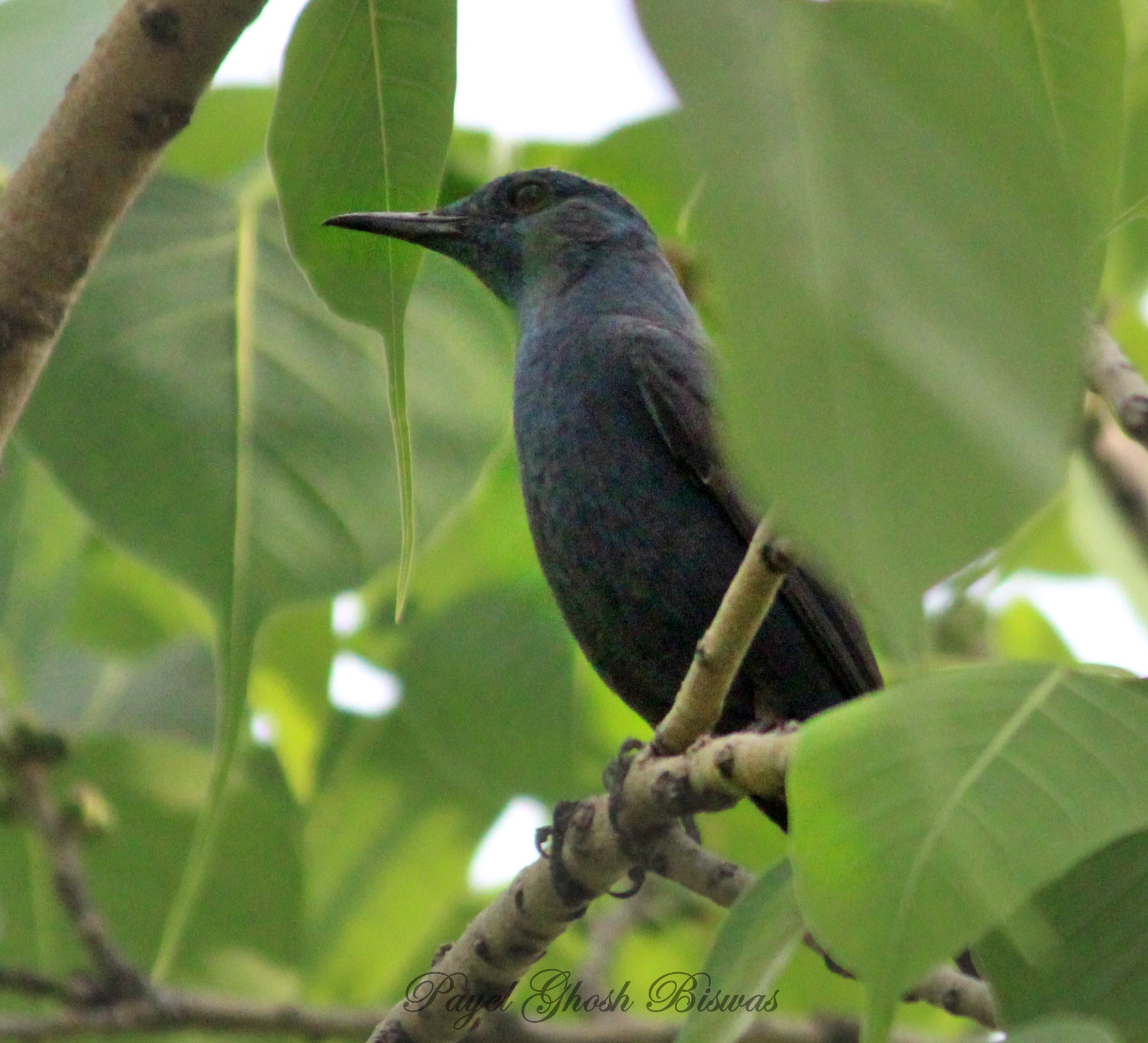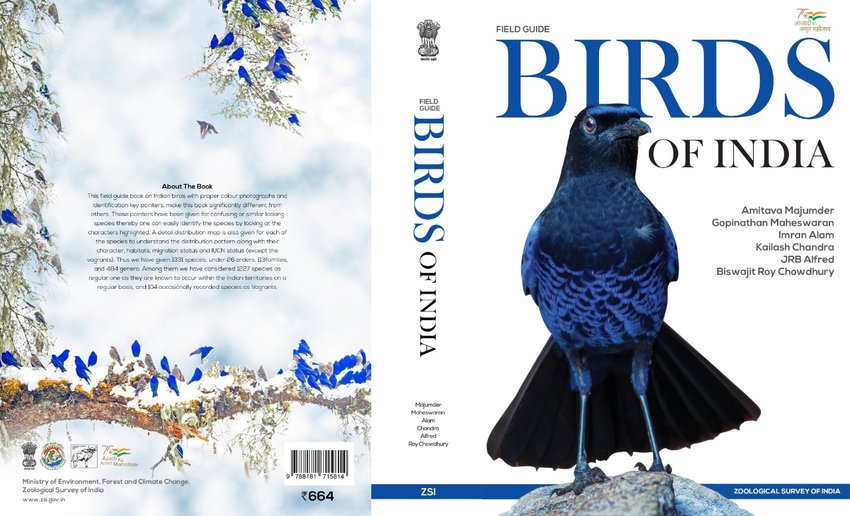Loving Birds in the Midst of a Pandemic
First published in Sanctuary Asia,
Vol. 43
No. 8,
August 2023
By Shubhobroto Ghosh
When the Coronavirus pandemic first struck in 2020, it brought to the forefront certain harsh realities that we had not faced before. Among the most compelling of those realities was the fact that, like billions worldwide who were fortunate not to be forced to migrate or exposed to the deadly virus, we had to stay indoors in our flat in Motinagar in New Delhi. Living under confined conditions, it came as a pleasant surprise when certain occasions during this period revealed delightful sights. The presence of birds, many varieties of which I had never thought existed in the area, were initially fleeting distractions that soon turned into prolonged sessions of intensive birdwatching for us.
I observed several species, of which one stands out during the otherwise traumatic time of 2020 and 2021 – Rose-ringed Parakeets. Parrots of all kinds have been my favourites since childhood, and their beauty of appearance, intelligence, and ability to mimic a wide range of sounds, including human speech, have enchanted me. I saw parrots mostly in captivity, in the absolutely brutal tiny cages, where they were hardly ever able to extend their bodies, chained in rings and with their wings clipped. Macaws and cockatoos enchanted me, but the species that I encountered most frequently was the Rose-ringed Parakeet, a gorgeously-coloured and raucous bird that is still kept illegally as a pet in many homes in India. Bearing the painful memories of these unfortunate captive birds in mind, it was a delight to observe freeliving parakeets indulging in all manner of behaviours right in front of my eyes. My wife Payel Biswas and I spent hours observing a whole population of these endearing parakeets that kept us entertained with their antics. One of their refuges was an Ashoka tree Saraca asoca, where they would perch and often preen themselves and one another. At a time of grave depression, Rose-ringed Parakeets, treepies, Yellow-footed Green Pigeons, Purple Sunbirds, Red-vented and Red-whiskered Bulbuls, and more, cheered us up even in the midst of the darkest gloom. Payel and I were even able to witness flocks or ‘murmurations’ of Rosy Starlings, also called Rosy Pastors, during their winter migration to India.

A Rose-ringed Parakeet Psittacula krameri. Photo: Shubhobroto Ghosh.
Notably, we even saw Painted Storks and Black Ibises flying over the terrace of our home. Not in our wildest dreams had we imagined that some storks and ibises would actually fly above our terrace. Watching birds offers many pleasures, as the late Indian ornithologist Sálim Ali also stated; among them is the opportunity to engage in observing the behaviour of creatures that so fascinated humans that it led to the invention of aircraft.
We had to shift our home recently because a new construction came up that led to our flat being damaged. Many parakeets that used to gather nearby also abandoned their retreat on account of the construction. Fortunately, at our new residence at Ramesh Nagar, we noticed a robust presence of birds as well, as evidenced by Payel’s recent sighting of a Blue Rock Thrush.

A Blue Rock Thrush Monticola solitarius. Photo: Payel Biswas.
We hope that more people will be able to observe and document the presence of birds and other animals that share our living spaces all across the country. The continued happiness derived from birdwatching in domestic situations also fits in nicely with my professional duties, since the motto of World Animal Protection is, “Wildlife Belongs in the Wild.” Birds ought to be cherished flying free, not in cages, that are in truth little more than prisons set up in our homes.
_1691484529.png)
A Yellow-footed Green Pigeon Treron phoenicoptera near the author’s home. Photo: Shubhobroto Ghosh.
In Appreciation of our Feathered Bipeds
In August 2022, the Zoological Survey of India (ZSI) published Birds of India – a photographic field guide to encourage birdwatching and scientific study of birds in India. Shubhobroto Ghosh, World Animal Protection Research Manager, spoke with Dr. Gopinathan Maheswaran, Scientist (E) in the Bird Section, ZSI, about this book and how it could enhance the appreciation of avian life in India.
What is the significance of this new book on birds?
This is the first photographic field guide from ZSI in a century and depicts all bird species found within Indian states and Union Territories. We have many field guides in India but a majority of them include drawings rather than images that accompany species’descriptions. This guide has clear pointers revealing the identifying characteristics of species. The text has been kept to a minimum, but important distinguishing colours and markings will help birders identify birds in the field.
What are the principal features of this book?
It includes all 1,331 bird species of India, including 100-odd vagrants. Wherever possible, we have included photos of both male and female avians, as some species display clear sexual dimorphism. For waders (of which 90 per cent are winter migrants), we have used images depicting winter and summer plumage since many waders develop different colouration in the breeding season, making accurate field identification difficult. Our field guide should help birders differentiate individual species in breeding and nonbreeding seasons.
How can this book help people appreciate birds better and pave the way for improved photography?
In India, more people are taking to bird photography as a hobby, thanks to the availability of inexpensive, high quality digital cameras. This encourages more people to take up bird photography, which ultimately supports conservation. Social media platforms too have helped by offering people outlets to showcase their images.
How and why is it important to tackle the bird trade?
Birds have a vital ecological role to play. We have included information on threat levels as listed by the International Union for Conservation of Nature (IUCN). People using this field guide can identify a species that is illegally being sold in the local market, and alert the enforcement authority immediately.
How can this book help encourage the study of birds?
This book will guide both beginners and professional birders in identifying species in the field. Retail price has been kept low to enable youngsters to enter the wonderful world of birdwatching and also to encourage field research by scientists and scientific staff of government-funded institutions to enhance the quality of their science communication.

Shubhobroto Ghosh, Wildlife Research Manager, World Animal Protection in India, is the author of Dreaming in Calcutta and Channel Islands.

.png)
_1691484529.png)
